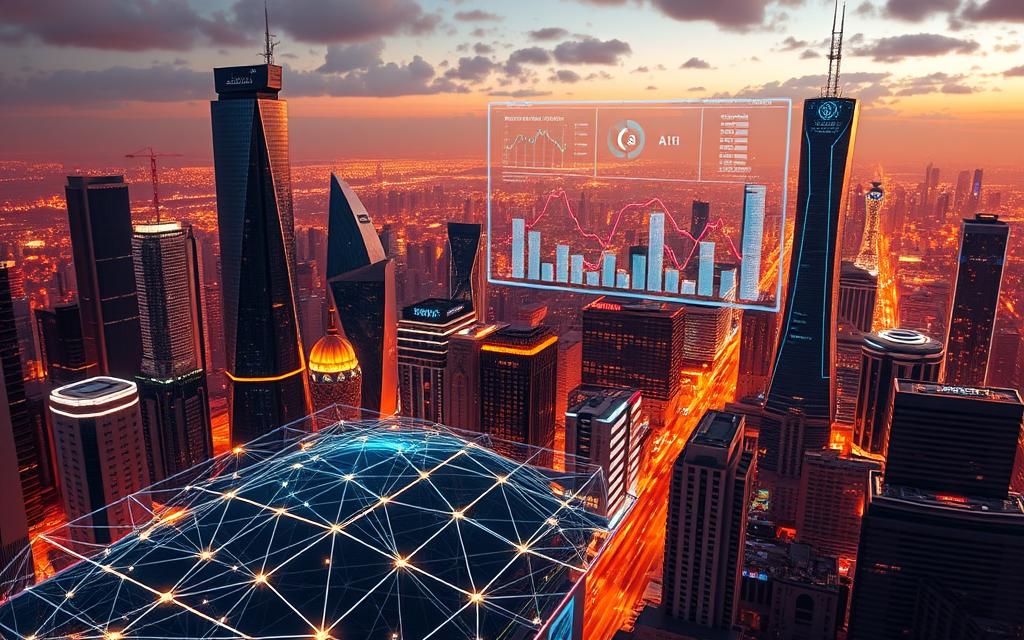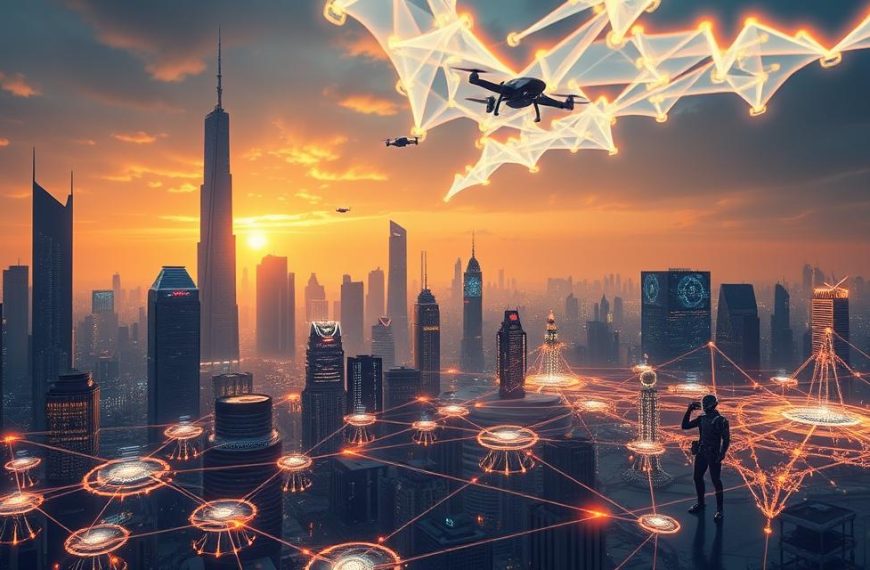The intersection of artificial intelligence and blockchain technology is reshaping digital finance, creating new opportunities for strategic portfolio growth. This analysis highlights pioneering projects that combine machine learning frameworks with decentralised networks, offering practical solutions beyond speculative trading.
Market trends reveal increasing demand for platforms demonstrating genuine technological innovation rather than temporary hype. Our evaluation focuses on cryptocurrencies that leverage AI capabilities for enhanced security protocols, predictive analytics, and automated decision-making systems. These features address critical challenges in traditional financial markets while creating sustainable value propositions.
Investors will find detailed examinations of market capitalisation patterns and performance indicators across multiple blockchain ecosystems. The guide prioritises projects with transparent development roadmaps and active technical documentation, essential factors for assessing long-term viability in this rapidly evolving sector.
Practical considerations include risk management frameworks tailored to AI-driven assets and diversification strategies accounting for the unique volatility profiles of these emerging technologies. The analysis balances immediate trading prospects with transformative potential across industries like healthcare logistics and energy distribution networks.
Introduction to AI and Blockchain Synergies
Modern financial systems are witnessing a groundbreaking merger between artificial intelligence and blockchain architectures. This partnership enhances how decentralised networks process data, execute contracts, and secure transactions through adaptive learning mechanisms.
What Are AI Cryptocurrencies?
These digital assets serve as access keys for AI-powered blockchain platforms. Unlike conventional crypto assets, they enable users to pay for machine learning services or contribute computational resources. For example, some tokens grant access to predictive modelling tools or decentralised data markets.
The Intersection of Artificial Intelligence and Blockchain
Combining these technologies addresses critical limitations in both fields. Blockchain provides transparent record-keeping, while artificial intelligence optimises network operations. Together, they create self-improving systems capable of automating complex tasks like fraud detection or energy distribution.
Key innovations include smart contracts that adapt to real-time data and decentralised autonomous organisations (DAOs) managed by AI algorithms. These platforms prioritise user privacy while scaling computational power – a balance traditional systems often struggle to achieve.
Market Cap and Performance Analytics
Evaluating digital assets requires precise metrics that reflect both current value and growth potential. Our analysis of 100 leading projects in the artificial intelligence projects category employs verified market capitalisation rankings from CoinMarketCap. This approach ensures investors access reliable comparisons across different development stages.
Understanding Market Cap Metrics
Market capitalisation remains the gold standard for assessing a project’s scale. Calculated by multiplying token price by circulating supply, it reveals how the market values a platform’s technology and adoption prospects. Established ventures often showcase billion-pound valuations, while newer entries demonstrate disruptive potential through rapid cap growth.
Technical Documentation and Trading Volumes
Transparent technical blueprints correlate strongly with sustainable performance. Projects with detailed developer resources typically maintain higher trading volumes – a sign of investor confidence. As one analyst notes: “Liquidity patterns in this sector often predict long-term viability better than short-term price spikes.”
Our verification process cross-references exchange data with official whitepapers, filtering out inflated claims. This methodology helps identify assets where market cap aligns with genuine technological progress rather than speculative hype.
Key Features of Leading AI Crypto Projects
Innovative blockchain platforms are setting new standards through specialised technical architectures. Three protocols demonstrate how tailored solutions address diverse industry demands while maintaining robust performance metrics.
Architectural Breakthroughs in Distributed Systems
NEAR Protocol redefines scalability with its Nightshade sharding mechanism. This layer-one blockchain processes 100,000 transactions per second while keeping fees below £0.01. Developers favour its human-readable account names and WASM-based smart contracts for building AI-driven applications.
Render Network transforms digital content creation through a decentralised GPU marketplace. Artists access rendering power equivalent to £15,000 workstations for pennies per task. “This model disrupts traditional cloud services by eliminating corporate middlemen,” notes a London-based tech analyst.
| Project | Market Cap | Price | Key Feature |
|---|---|---|---|
| NEAR Protocol | £2.6B | £2.14 | Nightshade Sharding |
| Render Network | £1.6B | £3.21 | GPU Marketplace |
| The Graph (GRT) | £823M | £0.08 | Data Indexing |
The Graph serves as blockchain’s answer to web search engines. Its protocol organises data across 40+ chains into queryable datasets. This infrastructure supports 90% of decentralised applications requiring real-time analytics.
These projects collectively power next-generation crypto ecosystems. Their £4.02B combined valuation reflects institutional confidence in practical blockchain implementations beyond speculative trading.
Exploring Top AI Cryptos to Invest In
Strategic portfolio construction in the blockchain sector now demands careful evaluation of both established networks and emerging platforms. This selection highlights protocols demonstrating tangible utility across industries, backed by verifiable adoption metrics.
Curated List of Leading Blockchain Projects
Market leaders combine robust technical frameworks with expanding user bases. Bittensor’s £2.3B valuation reflects its decentralised machine learning marketplace, while Internet Computer’s £2.1B capitalisation underscores demand for web3 infrastructure solutions.
| Project | Market Cap | Current Price | Core Function |
|---|---|---|---|
| Bittensor (TAO) | £2.3B | £224.50 | AI Model Marketplace |
| Internet Computer (ICP) | £2.1B | £8.76 | Decentralised Cloud |
| Render Network | £1.3B | £7.89 | GPU Sharing |
| Snorter Bot | £84M | £0.0021 | Automated Trading |
Balancing Risk and Innovation
Diversification remains critical when allocating funds across market capitalisation tiers. Established coins like FET (£1.2B) provide stability, while newer entries offer exposure to niche applications. “The optimal mix combines network security with disruptive potential,” advises a London-based fund manager.
Growth projections favour platforms solving concrete industry challenges. Render’s distributed rendering network serves media firms needing cost-effective solutions, while Story Protocol simplifies intellectual property management. These use cases suggest lasting relevance beyond speculative cycles.
Use Cases and Practical Applications
Practical implementations of machine learning within blockchain ecosystems are transforming how digital markets operate. These solutions address core challenges in financial systems while creating novel revenue streams for participants across industries.
AI in Automated Trading and Enhanced Security
Algorithmic systems now execute complex strategies across decentralised exchanges. Advanced trading bots analyse real-time data streams, identifying micro-trends invisible to human analysts. One London-based fund reported 37% higher returns after integrating these tools.
Security frameworks leverage neural networks to detect suspicious patterns. Machine learning models flag 89% of fraudulent transactions before confirmation, according to recent audits. This proactive approach safeguards users while maintaining network efficiency.
| Application | Technology Used | User Benefit |
|---|---|---|
| Market Analysis | Predictive Algorithms | Enhanced Decision Making |
| Fraud Prevention | Anomaly Detection | Asset Protection |
| Contract Automation | Self-Learning Agents | Reduced Manual Oversight |
Real-World Benefits for Developers and Users
Builders access intelligent platforms that streamline development processes. Automated code auditors reduce debugging time by 65%, allowing faster deployment of secure applications.
Individual participants monetise unused computing power through distributed networks. A Sheffield-based graphic designer earns £120 monthly renting spare GPU capacity. “It’s transformed how I fund new projects,” they noted.
These practical implementations demonstrate blockchain’s evolution beyond theoretical concepts. From automated yield optimisation to intelligent risk management, the technology delivers measurable value across user groups.
Evaluating the Role of AI Agents in Crypto
Autonomous systems are redefining cryptocurrency markets through advanced decision-making capabilities. These agents combine machine intelligence with blockchain’s transparency, creating self-optimising frameworks that outperform traditional methods.
How Machine Learning Transforms Trading
Models analyse real-time market data across exchanges, identifying patterns human traders might miss. Platforms like Virtuals Protocol demonstrate this through agents that execute micro-transactions in milliseconds. Their VIRTUAL token powers networks where bots manage assets independently.
Blockchain’s Trust Layer for Autonomous Systems
Every decision by these agents gets recorded on distributed ledgers. This ensures auditability while maintaining smart contract efficiency. For instance, AI crypto agents automatically adjust strategies based on historical performance, reducing volatility risks.
The fusion of adaptive intelligence with decentralised platforms marks a paradigm shift. As these systems evolve, they’ll likely handle complex content generation and portfolio management at scales beyond manual capabilities.

















